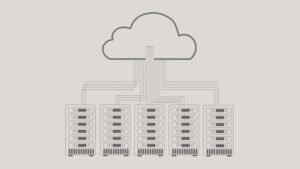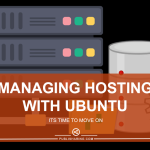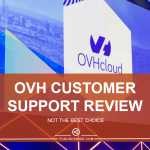Web hosting control panels have undergone a significant transformation over the past few decades, evolving in response to the rapidly changing landscape of the internet. As websites and online services have become more complex, the tools used to manage them have also progressed from basic interfaces with limited functionality to advanced platforms that simplify the complexities of server management, security, and website optimization.
In this comprehensive article, we will trace the fascinating journey of web hosting control panels, exploring their origins, key innovations, and how they have shaped the website management experience for millions of users worldwide.
The Early Days: Basic Interfaces for Website Management
In the early days of web hosting, website owners and administrators had few tools at their disposal for managing servers and hosting environments. Web hosting control panels were rudimentary, offering limited functionality that primarily focused on basic domain management and file transfers via FTP (File Transfer Protocol).
Command Line Interfaces and Manual Management
At the dawn of the internet, most server management tasks were performed using command-line interfaces (CLI). This method required users to have extensive technical knowledge, as they had to manually configure web servers, databases, and email services by entering precise commands. Setting up a website required a solid understanding of web server architecture, file paths, and permissions, which was a major barrier for individuals without programming expertise.
For most early adopters, the process of managing web hosting was time-consuming and fraught with complexity. Tasks like uploading website files, creating databases, or configuring domain name settings could take hours or days to complete. Errors in configuration were common, and troubleshooting often involved poring over dense log files and documentation. There was no simple graphical interface to streamline these tasks, meaning that only those with technical expertise could effectively manage websites.
The Rise of Static Websites and Simple Hosting Solutions
The websites of the early internet were primarily static, consisting of basic HTML pages with minimal interactivity. As a result, web hosting requirements were relatively straightforward, and early control panels—if they existed at all—focused on a small subset of features. These control panels provided options to create FTP accounts, manage basic email settings, and handle domain configurations. However, these functionalities were limited, and users were still expected to perform many tasks manually.
The introduction of early content management systems (CMS) like GeoCities and Tripod simplified some aspects of website creation by offering hosted solutions that allowed users to create simple websites without needing to worry about server management. However, these platforms were far from the fully-featured web hosting control panels we know today.
Hosting Industry Maturation and the Need for Better Tools
As the internet matured and the demand for more complex, dynamic websites grew, the limitations of basic control panels and manual management methods became increasingly apparent. Businesses and individuals alike began seeking out more powerful tools that could simplify server management and provide better control over their hosting environments.
By the mid-1990s, web hosting had become a booming industry, with new companies offering hosting services to meet the growing demand for personal and business websites. These hosting providers recognized the need for user-friendly management tools that could cater to users with varying levels of technical expertise.
The Rise of cPanel: Pioneering User-Friendly Control Panels
One of the most significant milestones in the evolution of web hosting control panels was the introduction of cPanel, a control panel that would revolutionize the industry and set new standards for usability and functionality.
The Birth of cPanel
Launched in 1996, cPanel was developed by John Nick Koston as a solution for simplifying web hosting management. At its core, cPanel aimed to provide users with a graphical user interface (GUI) that could replace the need for command-line interactions, making website management more accessible to individuals without a technical background.
From the outset, cPanel was designed to handle key website management tasks such as domain setup, email management, file uploads, and database administration, all through a streamlined interface. One of cPanel’s key innovations was its use of a “modular” design, where different features and services were grouped into logical sections. This organizational approach helped reduce the learning curve for users, allowing them to quickly find the tools they needed.
A User-Friendly Interface for All Skill Levels
cPanel’s user-friendly interface marked a significant departure from the complicated command-line methods that had previously dominated the web hosting industry. With its intuitive design and easy-to-navigate menus, cPanel enabled beginners to manage their websites with confidence, while still providing advanced users with the flexibility they needed to customize their server environments.
The control panel’s features included:
- Domain Management: Users could register and manage multiple domains, subdomains, and parked domains through the interface.
- Email Setup: cPanel allowed users to create email accounts, set up forwarding, and configure spam filters with ease.
- File Management: Through a built-in file manager, users could upload, edit, and organize files without needing an external FTP client.
- Database Management: cPanel provided access to tools like phpMyAdmin, allowing users to create and manage MySQL databases.
- Security Features: cPanel introduced user-friendly ways to configure SSL certificates, password-protect directories, and set up IP blocking.
The combination of these features made cPanel an all-in-one solution for website management, and it quickly became the industry standard for web hosting control panels.
The Role of Web Hosting Providers
As cPanel gained popularity, many web hosting providers adopted it as the default control panel for their hosting packages. This adoption was mutually beneficial: hosting companies could offer an easy-to-use interface that attracted customers, while users gained access to powerful management tools without needing to rely on technical support.
The success of cPanel spurred innovation across the industry, as other control panel developers sought to replicate or improve upon its features. The competition ultimately led to the development of more advanced tools and customization options, further advancing the field of web hosting management.
Expanding Functionality: From Website Management to Server Configuration
With the rise of dynamic websites and web applications in the early 2000s, the demand for more advanced control panel features grew. Web hosting control panels had to evolve beyond basic website management tools to meet the needs of users who wanted to fine-tune their server environments.
Dynamic Websites and the Need for Advanced Management Tools
The introduction of server-side scripting languages like PHP, ASP, and Ruby on Rails allowed websites to become more dynamic and interactive. As websites evolved from simple static pages to complex applications, the control panels that managed them needed to adapt. This meant adding features that could handle database management, server resource allocation, and performance optimization.
Users were no longer satisfied with simply uploading HTML files and configuring email accounts; they needed the ability to:
- Monitor server performance: Control panels started offering tools that allowed users to monitor CPU usage, memory consumption, and bandwidth allocation, helping them optimize their hosting resources.
- Configure databases: As websites became more data-driven, control panels integrated robust database management features, enabling users to create, modify, and back up databases from within the interface.
- Install software: To support the growing demand for web applications, control panels began including one-click installers for popular software platforms like WordPress, Joomla, and Magento.
- Improve security: With the increasing prevalence of cyber threats, control panels introduced more sophisticated security features, such as firewalls, malware scanners, and SSL certificate management.
These developments allowed users to manage not only their websites but also their underlying server environments, giving them greater control over performance, security, and scalability.
Server Configuration for Advanced Users
As web hosting control panels became more feature-rich, they started to cater to both novice and advanced users. For experienced system administrators, control panels offered granular control over server settings. These users could:
- Adjust server configurations: Advanced control panels allowed users to modify web server settings (e.g., Apache or Nginx), fine-tune PHP configurations, and manage server-side caching mechanisms.
- Access SSH terminals: Some control panels provided built-in SSH access, enabling users to perform command-line tasks without leaving the control panel environment.
- Create custom cron jobs: Users could automate routine tasks, such as database backups or script execution, using cron jobs managed through the control panel.
By incorporating these advanced features, control panels became indispensable tools for users managing both simple websites and complex, high-traffic applications.
The Advent of Customization and Integration
As the web hosting industry continued to evolve, users began demanding more personalized experiences and greater integration with third-party applications. Web hosting control panels adapted by offering customization options and expanding their integration capabilities.
Customizing the Control Panel Experience
To meet the growing demand for personalization, control panels started offering customization features that allowed users to tailor the interface to their preferences. These features included:
- Themes and Skins: Users could choose from a variety of visual themes and skins, allowing them to customize the appearance of their control panel.
- Custom Menus: Control panels introduced options for rearranging menus and tools, enabling users to prioritize the features they used most frequently.
- User Roles and Permissions: For businesses and teams, control panels began offering role-based access control, allowing administrators to assign specific permissions to different users.
These customization options made it easier for users to create a control panel experience that suited their unique needs and workflows.
Integration with Popular Web Applications
Another significant trend in the evolution of web hosting control panels was the integration of popular web applications. Control panels started offering seamless integration with content management systems (CMS), e-commerce platforms, and other web-based tools. This allowed users to:
- Install CMS platforms: One-click installers for platforms like WordPress, Joomla, and Drupal became standard features in many control panels. This made it easier for users to build and manage content-rich websites without needing to install software manually.
- Set up e-commerce solutions: With the rise of online shopping, control panels began integrating with e-commerce platforms like Magento and WooCommerce, simplifying the process of creating online stores.
- Connect with third-party services: Control panels expanded their integration options to include email marketing services, analytics platforms, and cloud storage providers, allowing users to extend the functionality of their websites.
These integrations helped streamline the website management process by reducing the need for manual software installations and configurations.
The Era of Cloud-Based Control Panels
With the rise of cloud computing in the late 2000s and early 2010s, web hosting control panels adapted to meet the needs of users managing websites hosted in cloud environments. Cloud-based control panels offered a new level of scalability, flexibility, and convenience.
Cloud Hosting and Its Impact on Control Panels
Cloud hosting introduced a new paradigm in web hosting, where resources like storage, processing power, and memory were no longer tied to a single physical server. Instead, websites could draw from a pool of virtualized resources, making it easier to scale up or down based on demand.
Control panels in the cloud era needed to adapt to this new hosting model by offering features that supported:
- Elastic scalability: Cloud-based control panels allowed users to easily scale their hosting resources up or down, ensuring that websites could handle traffic spikes without downtime.
- Automated provisioning: In cloud environments, control panels enabled users to deploy new instances of their websites or applications with minimal manual intervention.
- Integrated cloud storage: Cloud-based control panels provided seamless integration with cloud storage services like Amazon S3 or Google Cloud Storage, enabling users to store and retrieve large volumes of data efficiently.
Cloud Control Panels for Popular Platforms
As cloud hosting grew in popularity, several cloud-focused control panels emerged to help users manage their websites and applications. These control panels offered integration with leading cloud platforms like Amazon Web Services (AWS), Google Cloud Platform, and Microsoft Azure.
Examples of cloud-focused control panels include:
- Plesk Onyx: Plesk, a popular control panel that originated as a traditional hosting solution, evolved to include robust cloud management features. Plesk Onyx allowed users to manage multiple cloud instances, automate updates, and scale their resources based on real-time usage.
- ServerPilot: ServerPilot was designed specifically for managing cloud-based servers, offering a minimalist interface with powerful automation tools for deploying and managing web applications in the cloud.
Cloud-based control panels helped streamline the deployment and management of cloud-hosted websites, giving users more control over their cloud environments.
Advanced Management Tools and Automation
In recent years, web hosting control panels have continued to evolve, incorporating advanced management tools and automation capabilities that reduce the time and effort required to manage websites.
One-Click Installations and Automated Setup
One of the most popular features in modern control panels is the ability to install applications with a single click. Whether it’s a content management system, e-commerce platform, or blogging software, control panels now offer one-click installers that streamline the process of setting up new websites.
This automation reduces the complexity of manual software installations, allowing users to deploy fully functional websites in minutes. Platforms like Softaculous and Installatron are commonly integrated into control panels to provide users with access to hundreds of web applications with minimal effort.
Automatic Backups and Security
Data loss and security breaches are significant concerns for website owners. Modern control panels address these issues by offering automated backup solutions and robust security features.
- Automated Backups: Many control panels provide options for scheduled or real-time backups, ensuring that users can restore their websites to a previous state in the event of a data loss or server crash.
- SSL Management: Control panels have simplified the process of obtaining and installing SSL certificates, which are essential for encrypting data and securing websites. With automation tools like Let’s Encrypt, users can install and renew SSL certificates with just a few clicks.
- Advanced Security Features: From firewalls to malware detection, control panels now offer a wide range of security tools that help protect websites from attacks. Many control panels also include security auditing tools that alert users to potential vulnerabilities.
Automation for Routine Tasks
Routine server management tasks, such as updates and maintenance, can be time-consuming. To address this, modern control panels have introduced automation tools that handle these tasks automatically. This includes:
- Automated software updates: Control panels can automatically update software and server components to ensure that users are always running the latest versions.
- Cron job scheduling: Users can set up automated tasks, such as database backups or script execution, using cron job schedulers integrated into the control panel.
These automation features allow users to focus on more critical aspects of their websites and businesses while the control panel handles routine maintenance tasks in the background.
The Future of Web Hosting Control Panels
As technology continues to advance, web hosting control panels are likely to evolve in exciting new ways. Emerging trends such as artificial intelligence (AI), machine learning, and enhanced security measures promise to shape the future of website management.
Artificial Intelligence and Machine Learning
AI and machine learning are already being used in other areas of web development and server management, and it’s only a matter of time before they become integral to control panels. These technologies could enable:
- Predictive scaling: AI algorithms could analyze website traffic patterns to predict spikes in demand and automatically scale resources in real time.
- Automated performance optimization: Machine learning could help identify performance bottlenecks and recommend or implement optimizations without user intervention.
- Enhanced security monitoring: AI-powered security tools could detect and respond to potential threats faster than human administrators, reducing the risk of data breaches and attacks.
Enhanced Security Features
As cyber threats become more sophisticated, web hosting control panels will need to continue evolving their security features. Future control panels may include:
- AI-driven threat detection: Leveraging AI to detect and respond to security threats in real time.
- Blockchain-based security: Blockchain technology could be used to create tamper-proof security measures for websites and applications.
- Advanced encryption options: Control panels may offer more advanced encryption tools to protect sensitive data and ensure compliance with regulations like GDPR.
Conclusion
The evolution of web hosting control panels from basic interfaces to advanced management tools has fundamentally changed the way users manage websites and servers. From the early days of manual configuration to the introduction of user-friendly control panels like cPanel, and the rise of cloud-based solutions, these tools have made website management more accessible, efficient, and secure.
As we look to the future, the integration of AI, machine learning, and enhanced security features will likely shape the next generation of web hosting control panels. These innovations promise to further simplify website management while ensuring that websites are secure, optimized, and scalable to meet the demands of the modern internet.
In a world where online presence is more important than ever, the continued evolution of web hosting control panels will play a crucial role in empowering users to manage and grow their digital assets with confidence and ease.












Haii
Hay
Age ingats bakit bawal!!
Hello
Hi